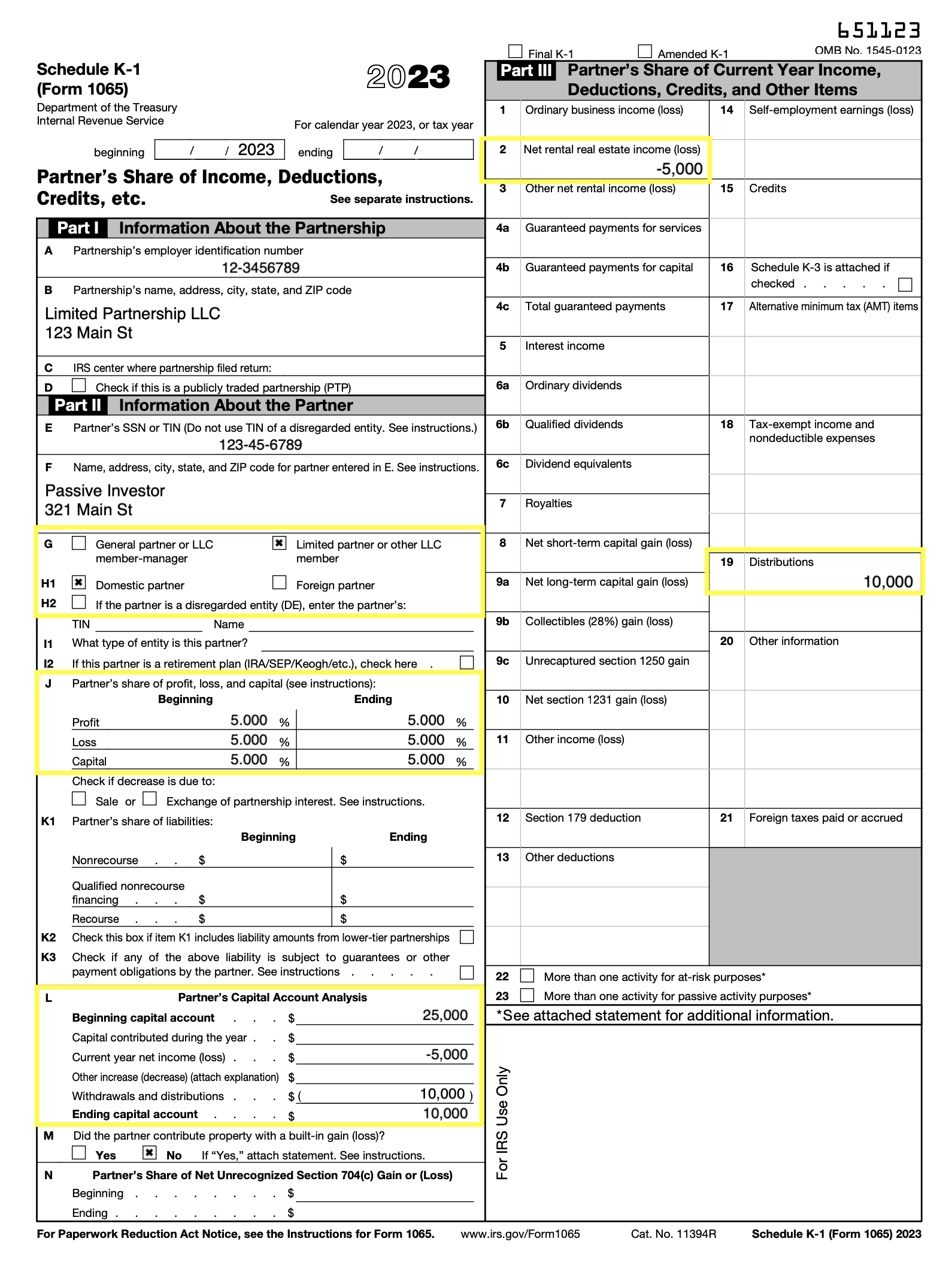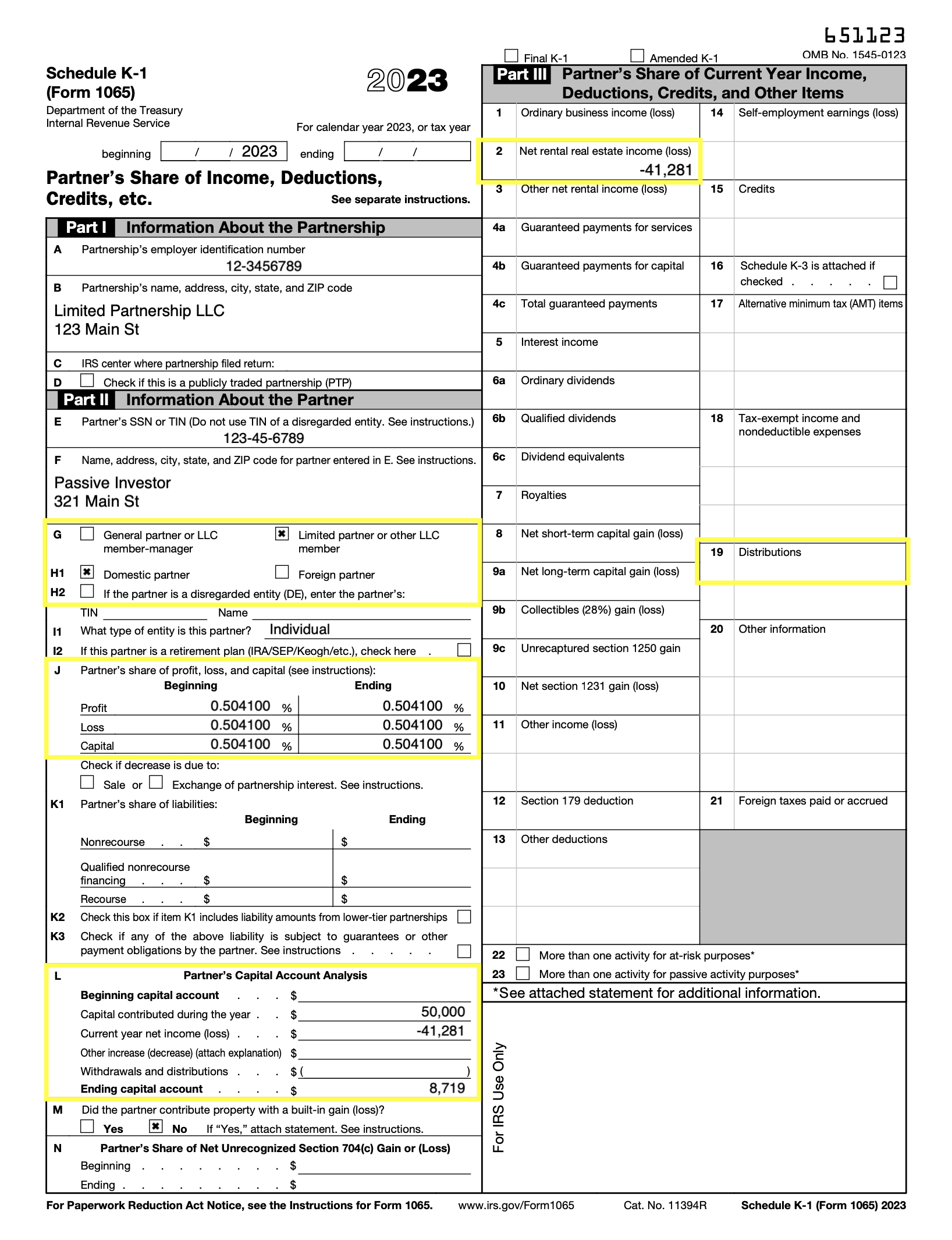
Welcome to the first official blog of GDI Capital Partners! With tax season right around the corner, we thought we'd kick it off with a quick explanation of the K-1 partnership return.
Navigating the K-1 Partnership Return
Understanding the ins and outs of tax documents can be a daunting task, especially when it comes to partnership returns. The K-1 form, officially known as Schedule K-1, is an essential component of partnership taxation. It is used to report each partner's share of the partnership's income, deductions, and credits. Partnerships are "pass-through" entities, meaning that the business itself doesn't pay taxes; instead, income is passed through to individual partners, who report it on their personal tax returns. The K-1 serves as a guide for partners to accurately report their share of the partnership's financial activities.
In this blog, we'll explore the purpose of a K-1 partnership return and break down the different sections to help you decode this intricate tax document. We will use this K-1 as an example.

Breaking Down the Sections:
1. Information About the Partnership (Part I):
At the top of the K-1, you will find general information about the partnership, including its name, address, and Employer Identification Number (EIN). Ensure that these details match the information on your tax return.
2. Information About the Partner (Part II):
This section includes details about the partner receiving the K-1, such as their name, address, and Social Security Number (SSN) or Taxpayer Identification Number (TIN). Accuracy in this section is crucial for seamless tax filing. As you can see in the first yellow box in the K-1 example below, this partner is a “Limited partner or other LLC member” and a “Domestic partner” (G and H1). The second box (J) shows the partner has 5% ownership of the partnership. All these percentages will often be the same. The third box (L) shows the changes in the partner’s capital account for the year. This tracks the taxable basis. In this example, the partner has a beginning capital account balance of $25,000. It shows a $5,000 loss (from depreciation in this case) which can be used to offset the tax liability of the $10,000 of distributions.
3. Net Income (Loss):
Part III is the heart of the K-1. This section outlines the partner's share of the partnership's net income or loss. It includes various components, such as ordinary business income, rental real estate income, and interest income. Pay close attention to these details, as they directly impact your taxable income. This is where the -$5,000 depreciation loss is shown (Box 2) as well as the distributions (Box 19).
4. Deductions:
Partnerships often have deductions that can be passed through to partners. Common deductions include depreciation, depletion, and charitable contributions. Understanding these deductions can help you make the most of available tax benefits.
5. Credits:
Some partnerships may pass through tax credits to partners. These could include energy credits or research and development credits. Being aware of these credits can positively impact your overall tax liability.
6. Other Information:
This section covers various items that may affect your tax return, such as foreign taxes paid, tax-exempt income, and distributions. Ensure that you review each component to accurately reflect your financial situation.
Now that we have a general idea of the different sections of the K-1, let's look at a real life example using two K-1s from the same investment (ignore that they both say 2023 at the top).

Here the initial information is all the same, but if you look at Box J you can see the percentages are much smaller. This is typical of a larger syndication where the capital required is greater. In Box L you can see a capital contribution of $50,000. This the investor's initial investment. The current year net income (loss) is -$41,281. This is a paper loss from depreciation and is substantial due to the utilization of cost segregation (more on that here if you are interested). After subtracting the loss, the ending capital account shows $8,719. Notice in Part III, Box 19 is empty as there were no distributions for this year. Let's now look at the K-1 from the next year from the same investment.

Once again, the initial information is the same as this is the same investor in the same syndication. Box J shows the percentages have not changed either. Now Box L shows a beginning capital account balance of $8,719, which was the ending capital account balance from the previous year (again, ignore that the K-1s all say 2023 at the top). The current year net income (loss) is less this year (-$2,923) as most of the depreciation was accelerated and taken as bonus depreciation in the first year. This year $957 was distributed, leaving an ending capital account balance of $4,839.
Note that while the capital account balance changes, the investor's ownership percentage does not. The capital account is useful for determining the tax implications if the partner were to sell their interest in the partnership. In general, a positive capital account balance is taxed as a capital loss, and a negative capital account balance is taxed as a capital gain. Clear as mud? We'll take our CPA's word for it.
In summary, the K-1 partnership return is a vital document that enables partners to report their share of a partnership's financial activities. By understanding the different sections and components of the K-1, you can navigate the complexities of partnership taxation and ensure accurate reporting on your personal tax return. Please note this information is for general knowledge and educational purposes only. It does not constitute professional advice. If you have any doubts or questions, don't hesitate to consult with a tax professional to ensure compliance and maximize your tax benefits.
On behalf of all of us at GDI Capital Partners, we appreciate you taking the time to further your education and we hope we provided value. Do you have questions about passive investments, underwriting, or anything else real estate related? We’d love to hear from you!



